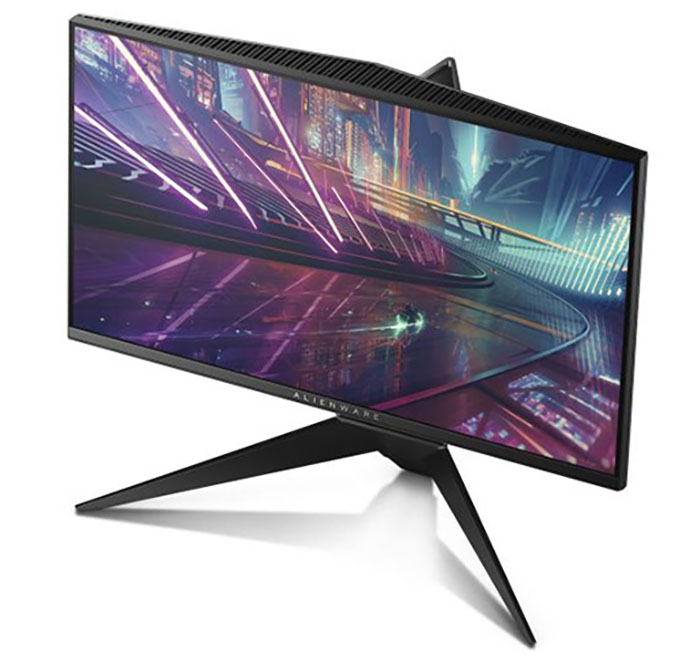Early Verdict
The Alienware AW2518H offers fantastic gaming performance with unparalleled speed and response in a 25” TN screen with FHD resolution. While some may wish for greater pixel density, its superb image quality won’t leave you squinting at small details. A unique approach to gamma renders a little more image depth and color saturation than other screens. The price is high but this kind of performance is addictive. Once you’ve tried it, you’ve gotta have it.
Pros
- +
240Hz
- +
G-Sync
- +
ULMB to 144Hz
- +
High output
- +
Color saturation
- +
Styling
- +
Build quality
- +
BT.1886 gamma
Cons
- -
Average out-of-box accuracy
- -
No gamma options
Why you can trust Tom's Hardware
Features & Specifications
Despite many reader comments to the contrary, users are still buying FHD monitors. 1920x1080 resolution dominates the enterprise desktop and it seems that gamers looking for every possible competitive speed advantage are embracing them too. We’ve already looked at panels from Acer, Asus, and AOC, that not only sport that relatively low resolution, they employ TN technology as well. Why would anyone still want a monitor like this? It’s all about that speed.
All the aforementioned products are based on the same part from AU Optronics. It’s a 25” (24.5” viewable) TN panel with FHD resolution and a native refresh rate of 240Hz. Acer and Asus have included Nvidia’s G-Sync module while AOC has opted to go with FreeSync. We’ll be looking at a ViewSonic display very soon that possesses the same specs and is also FreeSync-based. Today though, we’re checking out our first monitor from Dell’s Alienware brand: the AW2518H. Let’s take a look.
Specifications
These 25” panels are not the first to run at 240Hz but they are the first to support that refresh rate without overclock, and they can run in ULMB mode up to 144Hz. Previous displays could only manage 120Hz, which is easy to exceed at FHD resolution. Bit depth is 6-bits with Frame Rate Conversion added to bring the bandwidth to 8-bits. If you’re concerned about banding artifacts, don’t be. The video processing is so good that if you do see it, it’s likely the fault of the content, not the monitor.
Like its counterparts from the other major brands, the AW2518H is all about responsiveness and smooth motion. With a suitably stout video card, you can easily top 200 FPS in even the most demanding titles. While a QHD or UHD monitor offers greater pixel density, those lovely details don’t matter when your opponents can out-frag you. Competition is the main design goal here.
Dell has not been a major player in the gaming display market before now. And it’s appropriate that it has leveraged the Alienware brand to bring a highly capable monitor to bear. We’ve loved playing games on the other similar screens we’ve reviewed. Let’s see how the AW2518H stacks up.
Packaging, Physical Layout & Accessories
The AW2518H comes in a box similar to a television, which is unusual for something so small. Rather than a clamshell or top-opening carton, you remove four plastic plugs and lift the entire thing off its base. The pieces are completely encased in spongy foam, which should render it nearly impervious to shipping damage. Once open, simply snap the panel onto the already-assembled base and upright.
A separate box within the carton contains a snap-on input panel cover and a printed quick-start guide, plus cables for USB 3.0 and DisplayPort, along with an IEC cord for the internal power supply. A CD supplies drivers and the user manual.
Get Tom's Hardware's best news and in-depth reviews, straight to your inbox.
Product 360
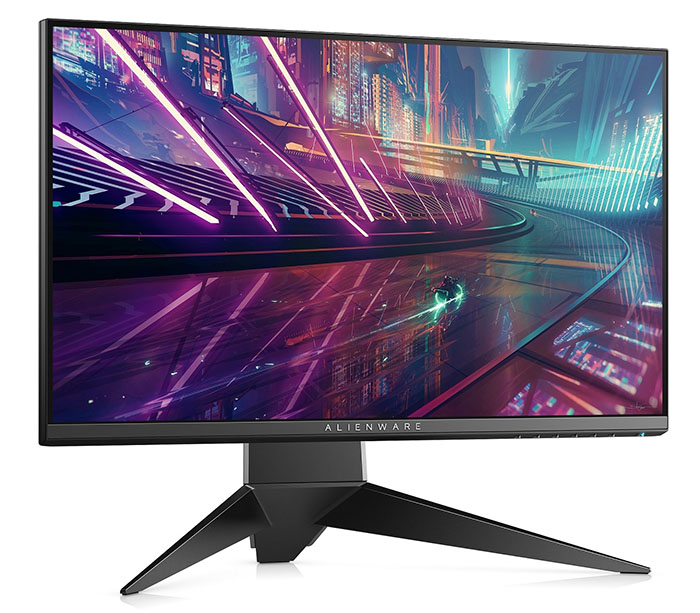
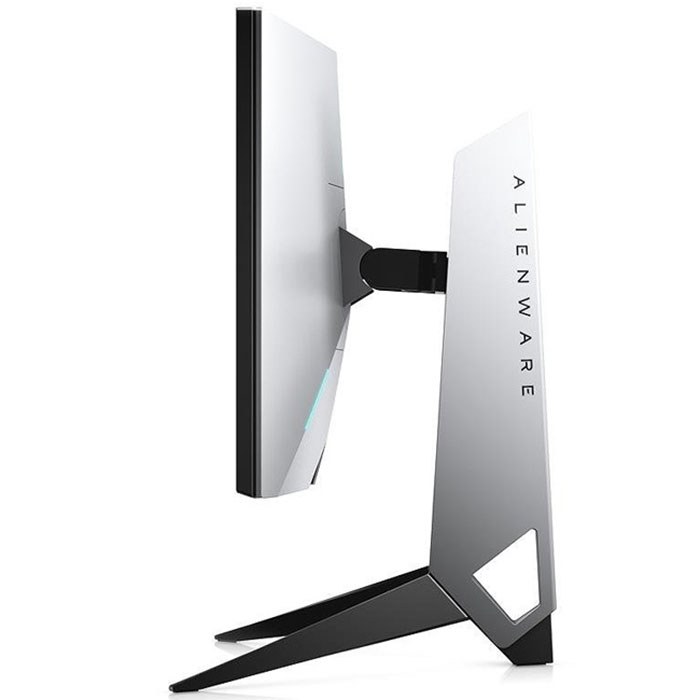
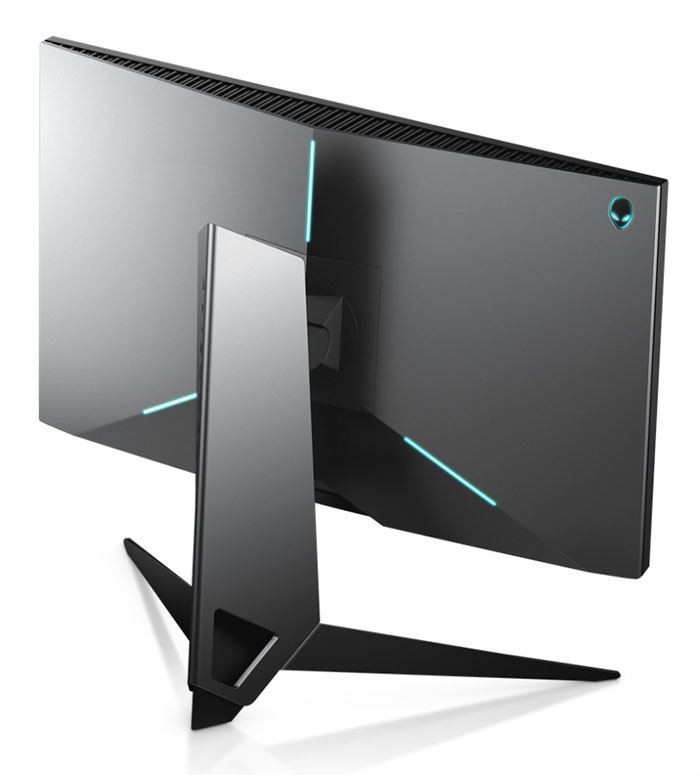
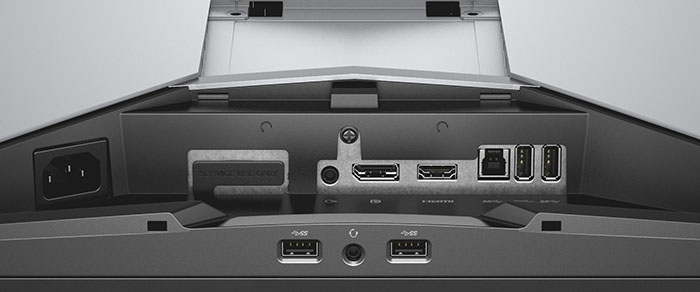
Regardless of category, every monitor manufacturer’s products have their own distinct style. Gaming displays are a shining example of this. Where Asus is going for cosplay fans with molded textures and wild shapes, Alienware is more subtle, yet the intent is clear. The AW2518H means business, and we don’t mean spreadsheets or word processing. The chassis is made up of flat sections and angles. There isn’t a curve in sight anywhere.
The bezel is super narrow at just 5mm at the top and sides and 14mm at the bottom. That’s about as close to frameless as we’ve seen yet. Seriously, you’ll barely notice it when an image is present. It’s flush-mounted behind the 3H-hardness anti-glare layer, which provides ample light rejection and a clear, grain-free picture. The control buttons are located bottom-right and click with a premium feel. The keys are tiny versions of the three-pointed star seen in much of Alienware’s marketing. We’d prefer a joystick, as always, but this system works just fine.
The base is solid metal and very slender, yet solid, without any slop or wobble. The upright is thick and made up of the same angles found everywhere else. The panel slides up and down smoothly over a 4.1” range. Tilt is 25° back and 5° forward, but swivel is minimal, just 20° to either side. It’s restricted by the large size of the upright and the mounting method used. You also get a 90° portrait mode.
No gaming monitor would be complete without some sort of lighting feature, and Alienware’s version is subtle yet effective. It consists of three light bars arranged in a star pattern on back and a small alien symbol in the upper right corner. The OSD has options for color. You can pick from among 20 primary hues or have it change automatically. It’s just the thing to complement a computer case outfitted with LED lighting.
The input panel is tucked up underneath and can be hidden with the included snap-on cover. The AW2518H incorporates Nvidia’s latest G-Sync module, which adds an HDMI input to the requisite DisplayPort. You also get one upstream and four downstream USB 3.0 ports. Two of them are on the bottom edge of the panel along with a headphone output. There are no built-in speakers.
MORE: Best Gaming Monitors
MORE: Best Professional Monitors
MORE: How We Test Monitors
MORE: How To Choose A Monitor
MORE: All Monitor Content

Christian Eberle is a Contributing Editor for Tom's Hardware US. He's a veteran reviewer of A/V equipment, specializing in monitors. Christian began his obsession with tech when he built his first PC in 1991, a 286 running DOS 3.0 at a blazing 12MHz. In 2006, he undertook training from the Imaging Science Foundation in video calibration and testing and thus started a passion for precise imaging that persists to this day. He is also a professional musician with a degree from the New England Conservatory as a classical bassoonist which he used to good effect as a performer with the West Point Army Band from 1987 to 2013. He enjoys watching movies and listening to high-end audio in his custom-built home theater and can be seen riding trails near his home on a race-ready ICE VTX recumbent trike. Christian enjoys the endless summer in Florida where he lives with his wife and Chihuahua and plays with orchestras around the state.
-
dark_lord69 hummm...Reply
a 60" 4K tv or a 25" monitor for the same price...
WOW...
I just don't understand monitor pricing anymore.
To me... That is such a ripoff, I feel sorry for the people that waist their money.
It's slightly better than the one that's $400 less.
Slightly better isn't worth that much more. -
ezrapetruik Ugly, overpriced , 1080 and that stand!! OMG what is this thing and would someone please kill it!!Reply -
eklipz330 i usually say that if you don't like it, it's probably not for youReply
but serious gamers have better options and casual gamers have better options. who is this for? -
onemarcioferraz It's incredible.. a monitor that intends to be on par with the competition (still) coming with HDMI 1.4 ?Reply -
BulkZerker "who is this for?"Reply
"Casual gamers" or "console peasants" making the pilgrimage to being a member of the "PC gamer master race". Or nVidia/Intel fanboys who will pay any price for MLG level gaming.
It's products like this that perpetuated the stereotype that PC gaming is expensive.
Also nVidia, the way it's meant to be milked. -
toddybody Monitor prices (respective to technical advancement) are ridiculous. Predator x34 is a great example of something that started and stayed expensive. Shows that not enough innovation or competition exists in the space. The 3820x1400 UltraWides should be around 600.00 by now, with the new 4K 144hz HDR Panels hitting around 1200.00. Unfortunately not the case.Reply -
gjbaker003 Gamers looking for a 1080p panel are not looking in the $400-$500 price range. This product literally is for no one when there are 1080p 144hz panels for $200 or less. The specs make zero sense.Reply -
truerock I built my PC in 2012 to run 1080p at 60Hz on a 27 inch monitor.Reply
I am ready to upgrade to something like 4k at 240Hz on a 42" monitor. But, obviously I'm going to be waiting for a while. I never thought I would have to wait 8 to 10 years before I could get any kind of significant upgrade to my 2012 PC. -
truerock I think perhaps one thing that is slowing monitor advancement is that most people prefer to watch video movies at 24Hz because they think 30Hz or 60Hz is "too realistic".Reply
